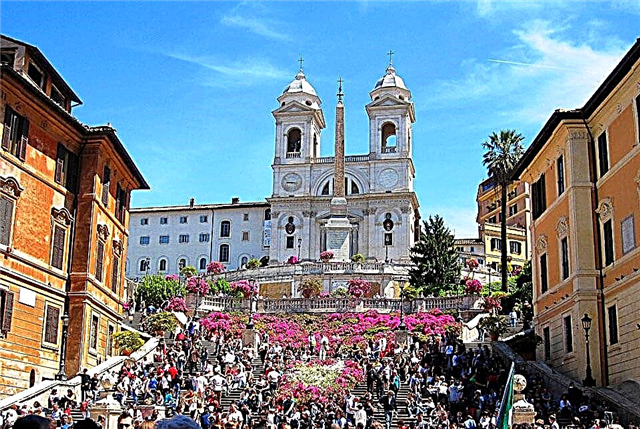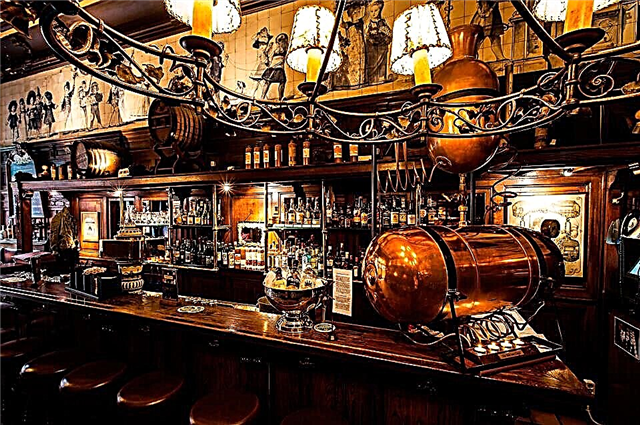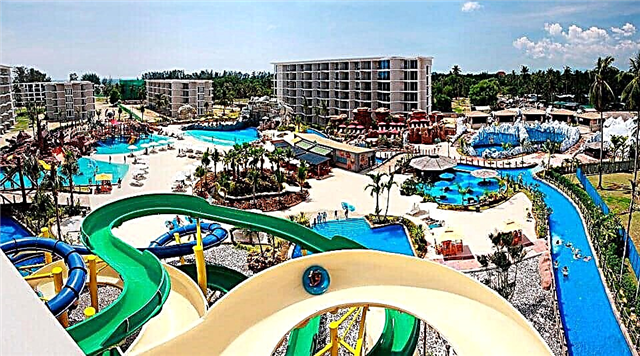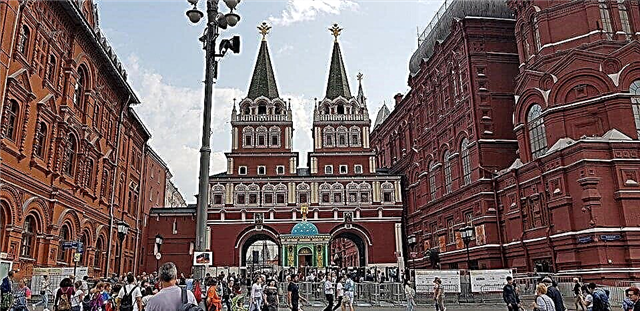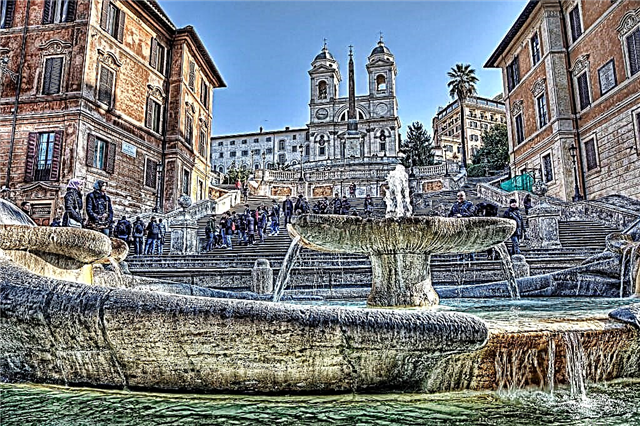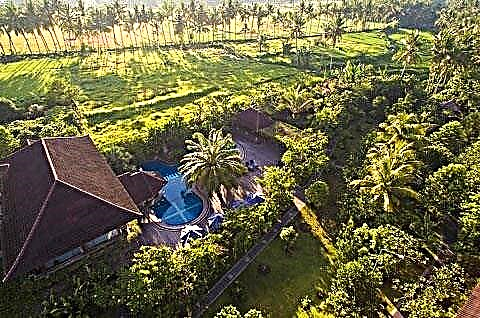Address: Russia, Moscow, st. Leo Tolstoy, 2
Construction date: 1679-1682 years
Shrines: the icon of the Mother of God "Guarantor of Sinners"
Coordinates: 55 ° 43'55.2 "N 37 ° 35'29.1" E
Content:
Near the Park Kultury metro station there is a church that looks like an elegant gingerbread house. The Church of St. Nicholas appeared in the 17th century and today occupies an honorable place among the most beautiful cathedrals and temples in Moscow. Tourists come specially to admire the multicolored glazed tiles, white stone decor and bright red and green kokoshniks.

Church history
In ancient times, the land around the temple belonged to the ancient Chudov Monastery. Here, outside the Zemlyanoy town, there were metropolitan stables, and the neighboring settlement was called Chudovka.
In Russia they loved to build churches in honor of St. Nicholas. The wooden church in Khamovniki has been known since 1625. In 1657 it was replaced by a stone one and in the documents it was called "the temple of St. Nicholas the Wonderworker at the metropolitan stables."
At the beginning of the 17th century, a new Khamovnicheskaya settlement was built instead of stables. Weavers settled on its streets, who were transported to Moscow from the Tver village of Konstantinovo by the will of the tsar. Craftsmen "khamovniki" earned their living by weaving white cloth "khamian" to the royal court. Skillful artisans received a salary and enjoyed considerable benefits.
The church, which has survived to this day, was founded not far from the original St. Nicholas Church during the reign of the Russian Tsar Fyodor Alekseevich. No information has survived about the architect and builders, but it is known that the temple was erected with the money of artisan weavers.

The foundation was laid on May 21, 1679, and the solemn consecration of the new five-domed church took place on June 25, 1682. The refectory and the bell tower were added later. The population of the Khamovnicheskaya Sloboda was growing rapidly, so the refectory building was expanded with a side-altar, which was consecrated in honor of Dmitry Rostovsky.
At the end of the 17th century, the royal Cloth Court was formed in the Khamovnicheskaya Sloboda, and by the beginning of the 18th century a new linen factory was opened. Then a wealthy businessman from Holland created a new factory here with 77 machines, where they made canvas, ribbon materials and other fabrics.
Like many Moscow churches, Nikolskaya suffered during the war with the French. In 1812, Napoleonic soldiers partially destroyed the interiors, and the rest burned down during a fire raging in the city. By the middle of the 19th century, the interior decoration was restored, and the walls were covered with new colorful paintings.
In 1872, another side-chapel was consecrated in honor of the icon of the Mother of God "The Assistant of Sinners". At the same time, a new iconostasis was installed in the church, new chandeliers were hung, and a fence with a gate appeared around the temple.

One of the famous parishioners of the church was Count Lev Nikolaevich Tolstoy, who lived nearby. In his works, the famous Russian writer mentioned the Nikolsky Church in Khamovniki several times.
After the revolution, the church was not closed. It remained operational, and Muscovites could always come here to pray. Twice - in 1935 and 1958, the Moscow authorities wanted to demolish the old church, but this did not happen.
It is noteworthy that from 1912 to 1960, the rector of the Nikolskaya Church was one clergyman - Archpriest Pavel Lepekhin. The first restoration of the temple took place in 1949. In 1972, a team of craftsmen completely restored the painting of the facades and the ceramic decoration of the building.
Architectural features and finishes
For several centuries, the elegant Nikolskaya Church remains one of the main adornments of the old district of Moscow. It was built in the traditions of Russian architecture of the 17th century - by a "ship". The main volume, a low one-pillar refectory and a slender bell tower are stretched out in a single line - from west to east.

Several reconstructions have not changed the unusual building in any way, so we can admire the results of the work of Russian architects. The walls of the temple are made of bricks and have decorative inserts of white stone.
The light airy building was erected in the style of the Moscow or "Naryshkinsky" Baroque, but retains the stylized features of Old Russian architecture. The southern and northern facades are completed by rows of three keeled zakomars, and the facades on the eastern and western sides are completed by five smaller zakomars.
Above the false zakomars, a row of kokoshniks rises, which marks the transition to the roof with five neat heads. Kokoshniks surround each drum. There is no cornice under the lower zakomaras, and this makes the walls of the church seem higher, and the building itself looks upward.
The facades of the main volume are not separated by blades, and the corners are decorated with columns recessed into the wall and motley painted columns. The main decoration of the church is the carved red-green window frames. In style, they are close to the pattern, which was very popular in old Yaroslavl churches.

Another striking element of the decor is luxurious glazed tiles. They do not form solid friezes, but decorate the facades in some places - on the main volume and on the bell tower.
The large picturesque cross that rises above the central head of St. Nicholas Church deserves special attention. It is decorated with a set of Orthodox symbols that are well understood by a believer. The slanting bar reminds of the scales of the Last Judgment, the crescent near the base - of the bowl, and the expressive shamrocks - of the Holy Trinity. The cross is crowned with a crown - a sign that the royal person has visited this church.
On the territory of the temple, two clergy houses have survived, which were built in the 19th century.
Bell tower
The tent-roofed bell tower of St. Nicholas Church is one of the largest in the city. She stands on a dull bottom four. Due to its unusual height, the bell tower is noticeably raised above the ground and is visible from everywhere. The second tier consists of graceful arched openings and has eight faces.

The complex vertical is completed by a tent with a small dome. The tent is decorated with three rows of rumor holes and therefore looks very delicate. Each of the 32 holes is framed by a beautiful patterned trim. The architects who built such a miracle were clearly not looking for easy ways!
In 1992, a huge bell weighing 108 pounds was raised on the bell tower. Judging by the inscription, it was cast in 1685 by the master of bell-making Mikhail Ladygin. In the 1930s, when an active anti-religious campaign began in the USSR, the old bell was removed. Fortunately, he was not sent to be melted down, but placed in the storage of the State Historical Museum. The bell has been there for over 60 years, until it took its rightful place on the church bell tower.
Interiors and shrines
The entrance to the building is under the bell tower. Once inside, visitors can see the rich decoration of the temple. The colorful frescoes have survived since 1845. They are found on the walls and dome - wherever there are no icons, cornices and stucco moldings.

Inside there is a gilded four-tiered iconostasis, which is crowned with the Crucifixion. The color of the iconostasis is in perfect harmony with the golden-blue paintings.
The main shrine of the temple is the icon of the Mother of God "The Assistant of Sinners". For a long time, the original of the icon has been in the Nikolo-Odrinsky monastery, on the Oryol land. The list came to Moscow in 1846 and was kept in Colonel D.N. Boncescula. Then Dmitry Boncheskul donated this icon to the Nikolsky Church in Khamovniki.
The church also displays an icon of St. Alexis, painted by the talented Tsarist iconographer Ivan Maximov in 1686. On it you can see the image of the Moscow Kremlin and the Spassky Gate. In addition, the temple is decorated with icons of the 17th century of the Smolensk Mother of God and the 18th century of the Martyr John the Warrior.
Useful information for pilgrims and tourists
The Moscow Church of St. Nicholas has the status of a cultural monument of federal significance. The doors of the temple are open to believers and tourists from morning to evening. Services are held twice a day - at 8:00 and 17:00.

There is a Sunday school at the church, where children from 6 to 15 years old are taught. The parishioners have created a charitable foundation and help people with disabilities, socially vulnerable families and elderly residents of the Khamovniki district.
How to get there
The Nikolskaya Church is located in the city center, 500 meters from the Park Kultury metro station and 200 meters from the Frunzenskaya embankment.




